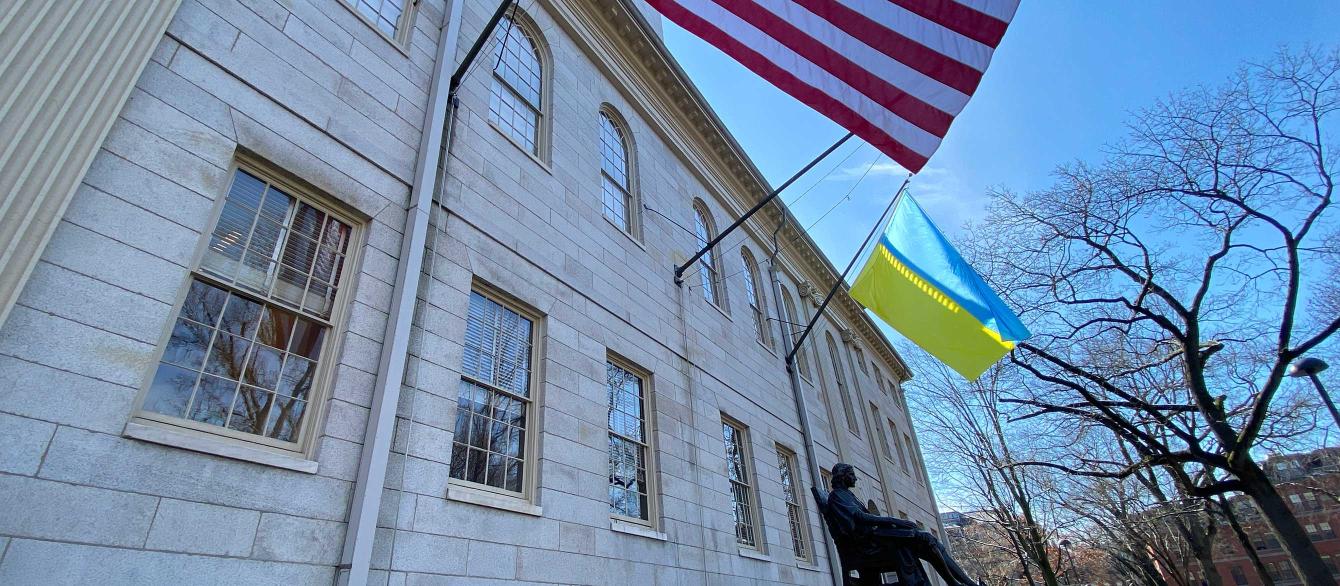Communist regimes are very secretive concerning how their states are organized. This goes for the historical Soviet Union as well as contemporary China. In effect, until the fall of East European communism in 1989-91, researchers faced great problems figuring out the facts. How was communism organized? Few people knew, and those who knew wouldn’t tell.
Today, three decades’ worth of archives-based research is slowly accumulating into a new map of the communist state. However, this development is happening within native-language historical research. Meanwhile, the political science agenda remains largely unreformed.
In effect, political science curricula need an upgrade. Textbooks on comparative politics tend to fall back on one of three outmoded lines of analysis, all of which are misleading. They reduce differences between communist regimes and liberal democracies to single aspects, such as the organization of the economy. They fail to teach students about the distinctive administrative doctrines and practices of Soviet-type states. And they compare post-communist countries not with their own history, but with an envisioned future as liberal democracies. In effect, scholarly inquiry gets stuck in a loop of ‘traveling problems’ and ‘conceptual stretching’ (Sartori 1970, 1991).
In a recent chapter for the Oxford Research Encyclopedia, I try to help remedy this state of affairs. I describe some core structural–organizational principles of communist state administration and give empirical examples of how they were—and are—expressed in practice, in historical Soviet sphere regimes, as well as 21st-century China. Why do political science curricula need this type of text?
Single-aspect differences
First, contemporary textbooks often treat communism as either an ideology or a centrally planned economy. However, around the globe, Soviet advisors also taught a distinct administrative design, based on Soviet inventions during the 1920s. At the high point of Soviet influence, in the late 1980s almost 30 Marxist-Leninist regimes existed on four of Earth’s five continents. In the twenty-first century, China is one of five countries that still count as largely communist in their administrative structure, together with Vietnam, Laos, Cuba, and North Korea.
Distinct but secret state structures—such as the Nomenclature system for administrative appointments—tend to survive the hollowing out of ideology and diversification of the economy. Thanks to the archives of, for example, East Germany, we now know more about these hidden administrative practices.
Many textbooks describe communist and post-communist countries, such as China, as unfulfilled democracies. Under deceptive subheadings such as ‘constitutional rule’ and ‘civil service,’ they explain that these Western concepts are actually not practiced—yet. In effect, China is compared to a future state that may never come to be, without addressing the historical structures which prevent it from getting there.
Likewise, command economy is often put forth as the defining characteristic of communism. As a corollary, students are left with the impression that the advent of capitalism is predestined to reform communist regimes into democracies. However, as has become increasingly clear, this is not necessarily the case.
Historical communism is key to many aspects of the post-communist condition. To better understand the hybrid regimes that have emerged, we need to retrace change processes back to the communist era. For instance, how do today’s informal networks and patronage practices within Russian state administration relate to the historical tradition of Nomenclature appointments? This line of inquiry is but one example of a research question that virtually no one is asking—perhaps since so very few scholars of post-communism take enough interest in the old system to ask it.
The cat-dog route of research
Instead, textbooks often treat each communist country sui generis, as a unique case, without reference to communist regimes as a historical family or type. This approach invites what the comparativist Giovanni Sartori dubbed the cat-dog route of analysis: When confronted with their first cat, observers who have only experienced dogs, and read about dogs, tend to assume that the cat is a dog too—or some version of a dog. In effect, scholarly understanding is misdirected.
For example, some undergraduate textbooks describe communist regimes as single-party regimes—without explaining the unique mode of how communist parties intertwine with the state. In effect, students can be left with the impression that communist states are much like liberal democracies, only they don’t change their government.
One ambitious and learned textbook describes how, in the sixth century BC, Chinese state administration was once based on principles of meritocratic recruitment, as laid down by the philosopher Confucius. By the sixteenth century, Confucius’ thinking started to be translated into European languages, came to influence 18th-century Enlightenment thinking, and eventually—by the late nineteenth century—Max Weber’s ideal type model of bureaucracy.
However, none of the most popular textbooks on comparative politics explain how Soviet administrative doctrines were a direct and outspoken negation of these meritocratic ideals. Nor do textbooks explain, or even mention, how communist countries such as China imported Soviet administrative doctrines, structures, and practices.
Democratic destiny
Third and relatedly, textbooks tend to take a teleological approach. Many describe communist and post-communist countries, such as China, as unfulfilled democracies. Under deceptive subheadings such as ‘constitutional rule’ and ‘civil service,’ they explain that these Western concepts are actually not practiced—yet. In effect, China is compared to a future state that may never come to be, without addressing the historical structures which prevent it from getting there.
A better approach would be to present ideal-type communist state administration as a more illuminating basis of comparison. For example, nowhere in the introductory textbooks on comparative politics can we find information on what a “cadre file” is, or its linchpin role in communist state structures. Since students are never taught about the existence of these files, student theses are unlikely to ask about their role today.
From research on historical communism in Europe, we know that the practice of documenting political loyalty in personnel files, and basing promotion and instruction on the file, dates back to the 1920s Soviet Union. Later, personnel files became the basis for processes of admission to higher education, as well as permission to travel abroad.
Arguably, the personnel file is a core component of the Soviet blueprint for communist-type state administration. To inquire into whether or not, in 21st-century China, this practice may perhaps have changed or shifted shape, students first need to know how it worked historically. This information ought to be in the textbooks.
Without basic knowledge about the historical doctrines and practices of the Soviet blueprint for state administration, students will be unable to formulate good research questions. They won’t know what to look for, nor will they understand what they’re observing even if they stumble across it. For example, the organization of postal controls or travel screening in former East Germany will provide better hypotheses for research on current-day China than any vision of a future transition to democracy. In sum, the presumption of democratic destiny hampers perception.
Lagging impact
There are plenty of good reasons why archival research on historical communist regimes has been slow to impact political science curricula. Often, it is published in languages other than English. Specialist historians discuss with other specialist historians within the same area-studies subfield. Few political scientists plow the detailed historical narratives commonly published in thick, native-language monographs. Accessible, synthesizing publications are rare or nonexistent. Hence, much new knowledge about historical communist regimes sits unused, at a time when students need to better understand both China, Russia, and the quagmires of post-communist reforms.
Further reading
Astrid Hedin's 2021 article “Communist State Administrative Structures” in the Encyclopedia of Public Administration is available for free access through Oxford University Press through December 31, 2021: https://doi.org/10.1093/acrefore/9780190228637.013.1411
References
Caramani, D. (ed., 2020). Comparative Politics. Oxford University Press. Chapter 6: Authoritarian regimes.
Chandler, J.A. (ed, 2014) Comparative Public Administration. Routledge. Chapter 9: The People’s Republic of China.
Hague, R; M. Harrop & J. McCormick. (eds., 2019) Comparative Government and Politics: An Introduction. Red Globe Press. Chapter 6: Bureaucracies.
Hedin, A. (2019) Illiberal deliberation: Communist regime travel controls as state capacity in everyday world politics. Cooperation and conflict, 54:2, 211-233. https://doi.org/10.1177/0010836718815522
Hedin, A. (2021) Communist State Administrative Structures. In: Encyclopedia of Public Administration. Oxford University Press, https://doi.org/10.1093/acrefore/9780190228637.013.1411
Newton, K and J.W. Van Deth (eds., 2021) Foundations of Comparative Politics: Democracies of the Modern World. Cambridge University Press. Chapter 14: Political Ideologies.
Sartori, G. (1970) Concept misformation in comparative research. American Political Science Review, 64(4), 1033-1053.
Sartori, G. (1991) Comparing and miscomparing. Journal of Theoretical Politics, 3(3), 243-257.
Yang, Jie (2011) The Politics of the Dang’an: Spectralization, Spatialization, and Neoliberal Governmentality in China. Anthropological Quarterly, 48:2, 507-533. 10.1353/anq.2011.0023




